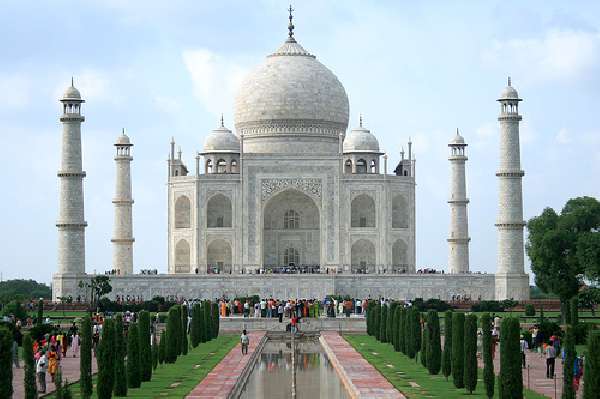Taj Mahal Built Using Harappan Measurement Units  Taj Mahal Agra |
According to a new study, the designers of the 17th century Taj Mahal have employed the same unit of measurement used by the Harappan civilization of 2000 BC.
The study by R. Balasubramaniam of the Indian Institute of Technology, Kanpur, has for the first time shown that the unit of length called "angulam" - mentioned in Kautilya's treatise "Arthasastra" dated 300 BC – has been used without a break by Indian builders for over 3,900 years until the British imposed their units in the 18th century.
The ancient "angulam" has been found to be equal to 1.763 modern centimetres, according to Balasubramaniam, a professor of materials and metallurgical engineering. He has carried out dimensional analysis of some of India's historical structures, built during different times, to identify the measuring units used in their engineering plans.
He says he was surprised that "angulam" and its multiples "vitasti" (12 angulams) and "dhanus" (108 angulams) have been used as the unit of measurement right from the Harappan times till the pre-modern era when the Taj was built.
Balasubramaniam, who last year studied the dimensions of the 1,600-year-old Delhi Iron Pillar at the Qutub Minar complex, found that "angulam" and its multiple "dhanus" were used as the basic units of length in its design.
In a paper published in Current Science, Balasubramaniam has shown that the modular plan of the Taj Mahal complex is based on use of grids of sides measuring 60 and 90 "vitasti".
He says the study has established that the design and architecture of the Taj is based on traditional Indian units codified in "Arthasastra" and that "there is nothing foreign" in its design.
"The fact that the unit of angulam of 1.763 cm could match very well the dimensions of historical monuments establishes the continuity of India's engineering tradition through the ages for as long as 3,900 years," says Balasubramaniam in his paper.
But how did the "angulam" tradition remain unbroken for so long?
As quoted in the website of "Nature India", Balasubramaniam believes the workers from the Harappan days were perhaps using some kind of scale "that was handed over through generations".






